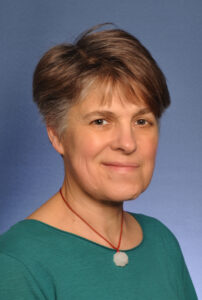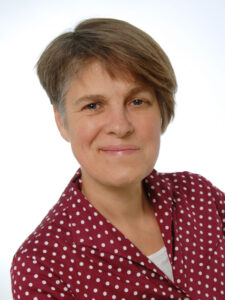Nothing is more powerful
than an idea whose time has come.
Victor Hugo
Victor Hugo
Autism is easy to understand!
All living beings strive to develop their inherent potential to the best of their ability.
If unimpaired, this leads to the development of a coherent Self consisting of body and mind. With this, we perceive ourselves and our environment, we process the information we receive and act thereupon in the best possible way, according to our nature.
Every human being is a multi-layered system and follows logical laws in its development. All developmental processes take place simultaneously on different levels. If only one part of the original development plan is impaired, this has consequences in different areas.
Autism is a highly complex developmental process; visible is only the tip of the iceberg!
An impairment during early pregnancy is considered to be a possible cause. Subsequently, the entire further development proceeds fundamentally different and varies greatly, depending on the onset and severity of the impact. For example, brain functions and even brain anatomy often organize themselves atypically. This results in a broad spectrum of different abilities on the one hand and a wide range of impairments on the other.
If we take up the brain physiological cause of autism and dovetail it with other theories, e.g. on early childhood development or on communication, on the functioning of the brain or on the construction of knowledge, a completely new perspective opens up: Some things that previously seemed strange or inexplicable can now be understood and appreciated as personally meaningful and systemic development under difficult conditions.
Kurt Lewin
Autism is easy to understand – I am very happy to support you in this!
I offer lectures and seminars for professionals in the field of education and teaching. In these, different levels and areas of individual neurotypical and autistic / neurodivergent development are highlighted and clarified. A comparison of the two, followed by a chronological classification, enables us to understand the challenges of autistic people initially on a neuronal level.

Lecture content
Target groups
My lectures are aimed at professionals and laypeople alike. They are delivered in generally understandable language and illustrated using vivid graphics.
They last approx. 60 to 90 minutes, allowing time for questions. In the half-day or full-day training courses, we address different aspects of the topic and explore them in greater depth.
I gladly adapt my knowledge to your individual questions. Practical examples are very welcome; I need a brief description of the situation in order to prepare myself.
My fee depends on the length of the event and the number of participants. I will be happy to arrange this with you personally on request.
Arabic Proverb
The desire to learn and the desire to travel – inner and outer journeys – have always broadened my horizons.
have always broadened my horizons.
My life’s journey has often connected me with people on the spectrum: During a school internship at a day support center, I met an autistic person for the first time, which ignited my curiosity. At that time, however, no one could tell as to why autistic people are different. During my stay of several years at ‘Garvald Community’, I learned to appreciate many of the strengths and skills of autistic people in their everyday interactions.
My studies in special needs education in Bremen were probably my greatest journey, because they opened my eyes to the hidden worlds within these visible ones. The essence of my studies was the knowledge of “Self” and “Other” and how dialogue is the precondition for any development.
I learned about the complex laws on a systemic level and their manifold interconnections. All living beings are subject to these principles, which are based on an active-dynamic unfolding approach. This knowledge led to a new and comprehensive perspective, it enabled me to elaborate a broader picture of autism and led to an authentic understanding of this developmental process!
After a period working with young people and adults, I now work in early intervention, including with children on the spectrum, which I really enjoy. My work focuses on exercises to regulate the body, on sensory integration and on the development of practical life skills.
In order to improve the quality of life of people on the spectrum, I would like to raise awareness about autism and make practical approaches known. Based on my research work on autism and language acquisition, “Why verbs are green”, I am developing my lecture and seminar program. My qualifications are based on many years of practical experience and solid theoretical knowledge – both of which I am happy to pass on to you!
Professional qualifications and occupations
Professional training and activities
„Autismus und Spracherwerb anders denken!“ –
‘Autism and language aquisition – a new approach’
In: BEHINDERTENPÄDAGOGIK (2010), Heft 3, S. 268 – 283
„Warum Verben grün sind“ – ‘Why verbs are green’
2012, Peter Lang, Frankfurt am Main